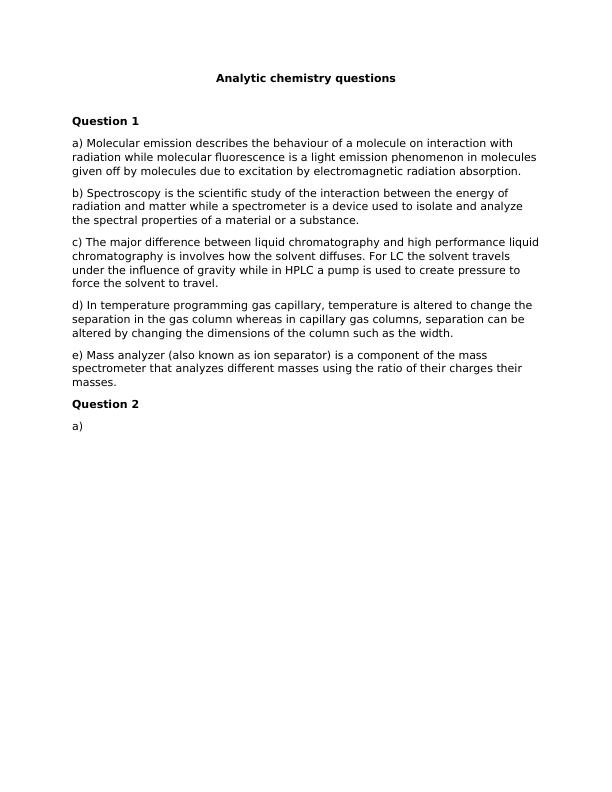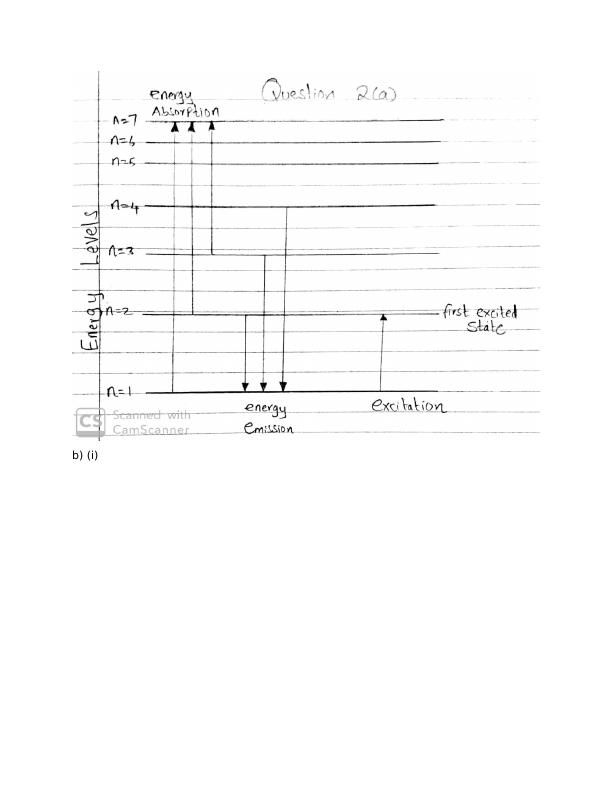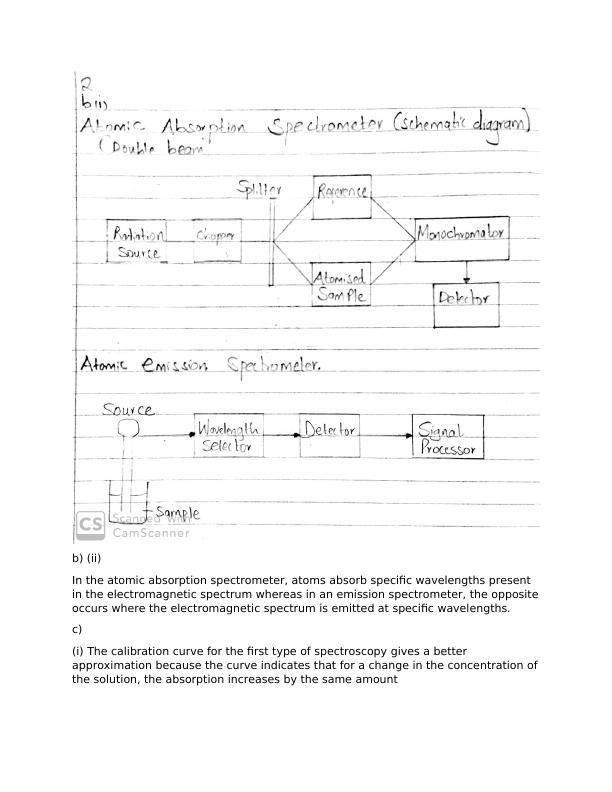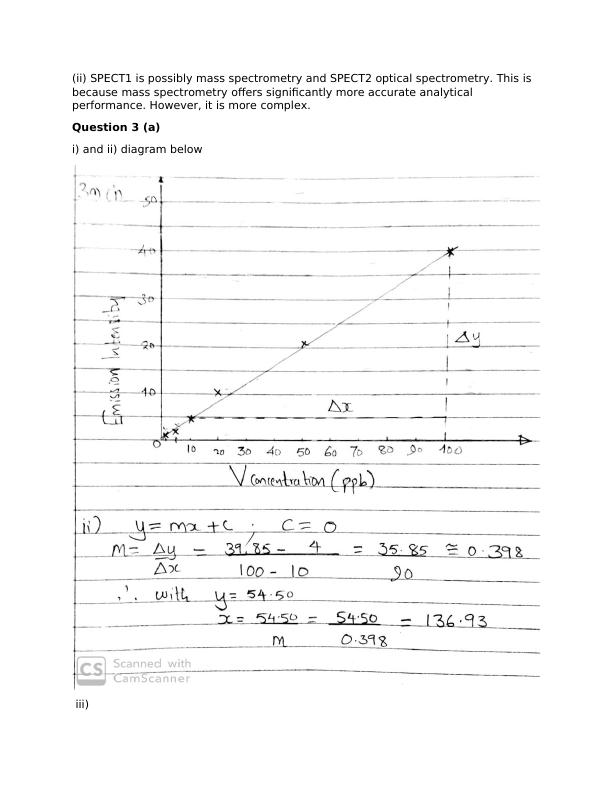Analytic Chemistry Questions
Added on 2023-01-20
12 Pages1132 Words20 Views
Analytic chemistry questions
Question 1
a) Molecular emission describes the behaviour of a molecule on interaction with
radiation while molecular fluorescence is a light emission phenomenon in molecules
given off by molecules due to excitation by electromagnetic radiation absorption.
b) Spectroscopy is the scientific study of the interaction between the energy of
radiation and matter while a spectrometer is a device used to isolate and analyze
the spectral properties of a material or a substance.
c) The major difference between liquid chromatography and high performance liquid
chromatography is involves how the solvent diffuses. For LC the solvent travels
under the influence of gravity while in HPLC a pump is used to create pressure to
force the solvent to travel.
d) In temperature programming gas capillary, temperature is altered to change the
separation in the gas column whereas in capillary gas columns, separation can be
altered by changing the dimensions of the column such as the width.
e) Mass analyzer (also known as ion separator) is a component of the mass
spectrometer that analyzes different masses using the ratio of their charges their
masses.
Question 2
a)
Question 1
a) Molecular emission describes the behaviour of a molecule on interaction with
radiation while molecular fluorescence is a light emission phenomenon in molecules
given off by molecules due to excitation by electromagnetic radiation absorption.
b) Spectroscopy is the scientific study of the interaction between the energy of
radiation and matter while a spectrometer is a device used to isolate and analyze
the spectral properties of a material or a substance.
c) The major difference between liquid chromatography and high performance liquid
chromatography is involves how the solvent diffuses. For LC the solvent travels
under the influence of gravity while in HPLC a pump is used to create pressure to
force the solvent to travel.
d) In temperature programming gas capillary, temperature is altered to change the
separation in the gas column whereas in capillary gas columns, separation can be
altered by changing the dimensions of the column such as the width.
e) Mass analyzer (also known as ion separator) is a component of the mass
spectrometer that analyzes different masses using the ratio of their charges their
masses.
Question 2
a)

b) (i)

b) (ii)
In the atomic absorption spectrometer, atoms absorb specific wavelengths present
in the electromagnetic spectrum whereas in an emission spectrometer, the opposite
occurs where the electromagnetic spectrum is emitted at specific wavelengths.
c)
(i) The calibration curve for the first type of spectroscopy gives a better
approximation because the curve indicates that for a change in the concentration of
the solution, the absorption increases by the same amount
In the atomic absorption spectrometer, atoms absorb specific wavelengths present
in the electromagnetic spectrum whereas in an emission spectrometer, the opposite
occurs where the electromagnetic spectrum is emitted at specific wavelengths.
c)
(i) The calibration curve for the first type of spectroscopy gives a better
approximation because the curve indicates that for a change in the concentration of
the solution, the absorption increases by the same amount

(ii) SPECT1 is possibly mass spectrometry and SPECT2 optical spectrometry. This is
because mass spectrometry offers significantly more accurate analytical
performance. However, it is more complex.
Question 3 (a)
i) and ii) diagram below
iii)
because mass spectrometry offers significantly more accurate analytical
performance. However, it is more complex.
Question 3 (a)
i) and ii) diagram below
iii)

End of preview
Want to access all the pages? Upload your documents or become a member.
